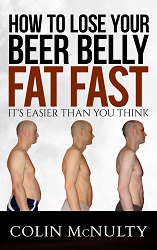I’ve been holding off posting an update on my torn rotator cuff (specifically the supraspinatus) as I went for an MRI and Arthrogram (MRA) 3 weeks ago and was hoping to post the result up. The National Health Service (NHS) in the UK may offer free quality care, but it’s certainly not fast! 3 weeks on and I’ve not even got the appointment through to see the Consultant for the results. 🙁
Whenever I tell people I’ve torn my rotator cuff, the first question is invariably: “What is the rotator cuff?” The rotator cuff is 4 small muscles / tendons, which form a sleeve around the shoulder joint, comprises the supraspinatus, infraspinatus, teres minor and subscapularis. A picture speaks a thousand words:
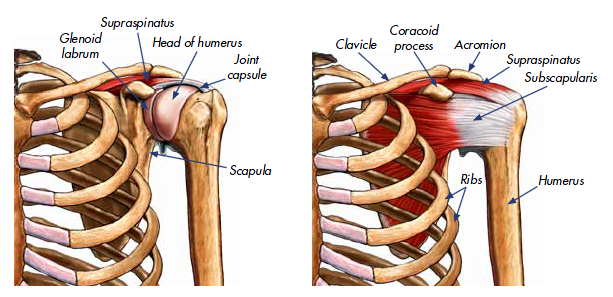
Whilst I wait on the NHS however, things are improving. After I stopped sulking, started going back down the gym again and doing some focused rotator cuff exercises, my shoulder has ironically improved quite a bit. So I thought I’d post up what I’ve been doing in terms of exercises and workouts.
In terms of workouts, there are 5 CrossFit style WODs (Workouts Of the Day) that I’ve devised for which, I let pain be my guide. Basically I spent several hours down the gym and tried every exercise I could think of to see what hurt. When I had the list of shoulder painless exercises, I mixed them up and put them together. As I come up with more, I’ll post them up here too. If not otherwise stated, all workouts are timed and done as fast as safely possible.
Torn Rotator Cuff Warm Up
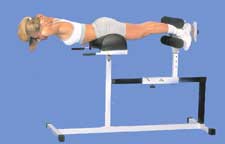 3 rounds of:
3 rounds of:
- 200m Run
- 10 Kettle Bell Swings (Russian style / head height only) increasing in weight through 16kg, 20kg and 24kg
- 10 GHD (Glute Ham Device) situps
- 10 Back Extensions (also on the Glute Ham Device)
Torn Rotator Cuff Workout 1
 21-15-9 of:
21-15-9 of:
- Box Jumps
- Sit Ups
- Kettle Bell Swings (Russian style / head height only)
The Russian style kettle bell swing (thanks Lance!) puts hardly any load on the shoulders, as all the momentum is generated from the hips, the straight arms just guide the weight up and don’t pull it. The American over head kettlebell swing is fine, but it’s a different swing with different goals (like the dead hang pullup vs the kipping pullup) and loads the shoulder to the point of pain with a rotator cuff tear.
If you’re not familiar with the terminology, 21-15-9 means do 3 rounds going through each exercise in turn. In the first round do 21 of each exercise, in the second round to 15 of each exercise and in the last round just do 9 of each, so written out long hand, it looks like this:
- 21 Box Jumps
- 21 Sit Ups
- 21 Kettle Bell Swings
- 15 Box Jumps
- 15 Sit Ups
- 15 Kettle Bell Swings
- 9 Box Jumps
- 9 Sit Ups
- 9 Kettle Bell Swings
In terms of box jump height and kettle bell weight, as with all CrossFit style workouts (and particularly if you’re rehabilitating an injury) they should be scaled to your capabilities. For me I did 24″ box jumps, and started at 16kg kettle bell swings, but worked up to 24kg.
Torn Rotator Cuff Workout 2
5 rounds of:
- 200m Run
- 15 Kettle Bell Swings (Russian style / head height only)
- 15 sit ups
Torn Rotator Cuff Workout 3
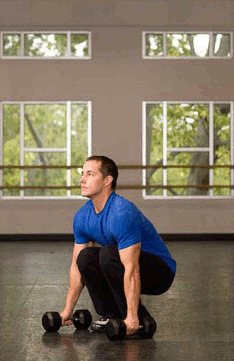 AMRAP (As Many Rounds As Possible) in 10 minutes of:
AMRAP (As Many Rounds As Possible) in 10 minutes of:
- 5 Dumb Bell Deadlifts
- 5 Dumb Bell Hang Squat Cleans
- 5 Front Squats
You could change the time here to whatever suits you best, from 5 – 20 minutes would be good. For me, I wanted to make sure I was always able to control the dumb bells so they didn’t crash onto my shoulder during the cleans, so I went with a pair of 10kg dumbbells. The AMRAP nature of this workout doesn’t mean that going light is any easier, it just means you do more rounds.
Those used to CrossFit will probably recognise that this is a modified Dumb Bell Bear complex, but without the Push Presses.
Torn Rotator Cuff Workout 4
21-15-9 of:
- Kettle Bell Swings (Russian style / head height only)
- Sit Ups
- Lunge Walk (1 rep is one single lunge
Torn Rotator Cuff Workout 5
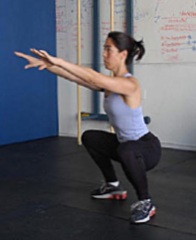 3 x Tabata of:
3 x Tabata of:
- Squats
- Sit ups
- Kettle Bell Swings
“Tabata” means that for 20 seconds do as many reps of the assigned exercise as you can, then rest for 10 seconds. Repeat this 7 more times for a total of 8 intervals, 4 minutes total exercise (including the last 10 seconds of rest). I like to score this as a total of all the reps achieved in all 8 rounds, but officially you’re meant to score only your worst round. For example, if you did:
- 13 squats (in 20 seconds) then rested 10 seconds then:
- 12 squats
- 11 squats
- 10 squats
- 10 squats
- 9 squats
- 8 squats
- 7 squats
Your official tabata score would be 7. But I like to record total work, which would be 80 in this case. Watch out for swinging the air of your sore shoulder too much!
So for this workout, you do 8 intervals of squats as I’ve just described, then straight into 8 intervals of situps (with only 10 seconds rest between the last squat and the first sit up), and then 8 intervals of kettle bell swings, for a total of 12 minutes.
Again CrossFitters will recognise this as an adaptation of “Tabata This” which is the same formula but 4 Tabata rounds of squats, pushups, situps, and pullups. For my rotator cuff tear, even push ups give me shoulder pain, and pullups are how I tore it in the first place, so they’re out.
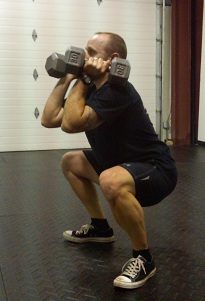 Torn Rotator Cuff Workout 6
Torn Rotator Cuff Workout 6
Round 1:
- 400m run
- Then 5 rounds of the dumb bell bear complex (see Workout 3 above):
- 5 Dumb Bell Deadlifts
- 5 Dumb Bell Hang Squat Cleans
- 5 Front Squats
Round 2:
- 400m run
- Then 4 rounds of the dumb bell bear complex (see Workout 3 above):
- 5 Dumb Bell Deadlifts
- 5 Dumb Bell Hang Squat Cleans
- 5 Front Squats
Round 3:
- 400m run
- Then 3 rounds of the dumb bell bear complex (see Workout 3 above):
- 5 Dumb Bell Deadlifts
- 5 Dumb Bell Hang Squat Cleans
- 5 Front Squats
To be clear then, you go through the bear complex a total of 12 times, so 60 Dumb Bell Deadlifts in total for example. 3 rounds is hard enough (I suggest again, that you go light on the Dumb Bells) but you could always do rounds 4 and 5, with 2 and 1 times through the bear complex respectively.
As you can see, a torn rotator cuff is a right pain (pun intended!) in terms of reducing the types of individual exercises you can do, and there’s a lot of box jumps, sit ups and kettle bell swings in there. At some point I’ll move up to doing GHD sit ups for some of these workouts. What’s important to me though is keeping up some strength through some range of motion, without exacerbating my injury.
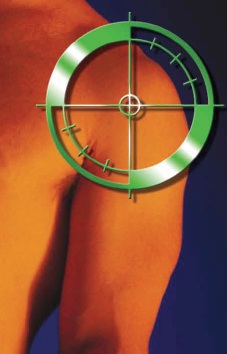 I have been to see a physiotherapist about my shoulder, but for some reason I always come away underwhelmed by them. They charge a fortune and I’m never convinced by the efficacy of what they do. But perhaps that’s just the one’s near me! I’m all for self learning and educating myself as to the problems, issues and treatments, as it makes me better able to understand and manage my own recovery, and I thank the stars for the internet, which enables this to happen so effortlessly in this day and age, particularly when it comes to accessing the best information from around the world.
I have been to see a physiotherapist about my shoulder, but for some reason I always come away underwhelmed by them. They charge a fortune and I’m never convinced by the efficacy of what they do. But perhaps that’s just the one’s near me! I’m all for self learning and educating myself as to the problems, issues and treatments, as it makes me better able to understand and manage my own recovery, and I thank the stars for the internet, which enables this to happen so effortlessly in this day and age, particularly when it comes to accessing the best information from around the world.
As such I’ve spent some time researching rotator cuff injury exercises and treatments and am currently following a program put together by a specialist injury physiotherapist from Ohio. When I’m sure I’m happy with it, I’ll post the details up here, but at the moment, things are looking good. Combined with the workouts above, as I said at the start, my shoulder pain has diminished considerably for 90% of day to day activities.
I’d love to hear your own shoulder pain experiences or if you have any questions, please post a comment below.
